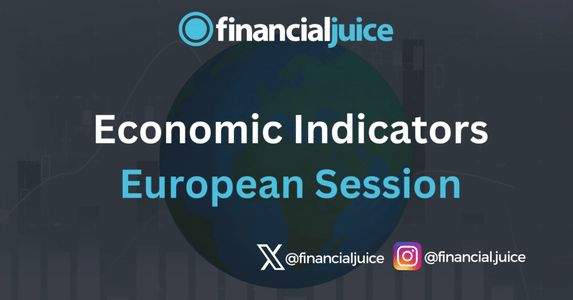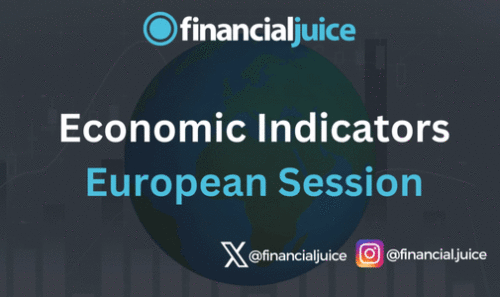
Week Ahead: Economic Indicators (EU)
Hey, Traders!
For the May 13th week, here is a list of all of the major economic indicators being released during the EU Session, with a brief synopsis of what they represent and what to possibly expect from the markets in reaction.
Tuesday 14th May
02:00 ET
UK Unemployment Rate
Change in the number of people claiming unemployment-related benefits during the previous month, released by the ONS (Office National Statistics). As the UK provides a lot of benefits to its population, requiring a lot of money, the more people that sign on, the money that will have to be pooled from the government’s budget to support people.
What to expect:
By tracking the jobs data, investors can sense the degree of tightness in the job market. If wage inflation threatens, it is a reasonable bet that interest rates will have to rise and bond and stock prices will fall. In contrast, when jobs growth is slow or negative, then interest rates are more likely to decline – boosting bond and stock prices in the process.
German HICP
The Harmonized Index of Consumer Prices is an index of consumer prices calculated and published by Destatis, on the basis of a statistical methodology that has been harmonized across all EU member states. HICP is a measure of prices used by the Governing Council of the EU to define and assess price stability in the euro area as a whole in quantitative terms.
What to expect:
By tracking inflation, whether high or low, rising or falling, investors can anticipate how different types of investments will perform. Over the long run, the bond market will rally (fall) when increases in the CPI are small (large). The equity market rallies with the bond market because low inflation promises low interest rates and is good for profits.
05:00 ET
German ZEW
Economic Sentiment
The ZEW Indicator of Economic Sentiment is calculated from the results of the ZEW Financial Market Survey. The ZEW is followed closely as a precursor and predictor of the Ifo Sentiment Survey and as such is followed closely by market participants. The data is released around the middle of the month for the current month. The survey provides a measure of analysts’ view of current economic conditions as well as a gauge of expectations about the coming six months. The latter measure tends to have the larger market impact and reflects the difference between the share of analysts that are optimistic and the share of analysts that are pessimistic. About 350 financial experts take part in the survey.
Current Conditions
This survey summarizes the net percentage of positive and negative responses regarding the expectations for economic growth in the next 6 months, as given by financial analysts from banks, insurance companies and large industrial enterprises. For example, if 50% believe that the economic situation will improve and 20% believe it will get worse, the result will be +30.
The survey deals with the markets of Germany, the USA, Japan, Great Britain, France, Italy and other EU countries.
What to expect:
A reading that is stronger than forecast is generally supportive (bullish) for the Euro, while a weaker than forecast reading is generally negative (bearish) for the Euro.
Wednesday 15th May
02:45 ET
French HICP
Harmonised Index of Consumer Prices, is the same as CPI, but with a joint basket of products for all Eurozone member countries. The impact on the currency may go both ways, a rise in CPI may lead to a rise in interest rates and a rise in local currency, on the other hand, during a recession, a rise in CPI may lead to a deepened recession and therefore a fall in local currency.
What to expect:
A higher than expected reading should be taken as positive/bullish for the EUR, while a lower than expected reading should be taken as negative/bearish for the EUR.
05:00 ET
Eurozone GDP
Gross domestic product (GDP) is the total monetary or market value of all the finished goods and services produced within a country’s borders in a specific time period. GDP is the broadest measure of aggregate economic activity and encompasses every sector of the economy. There are two preliminary estimates which are based on only partial data. The first is the preliminary flash, introduced in April 2016 and limited to just quarterly and annual growth statistics for the region as a whole. This is issued close to the end of the month immediately after the reference period. The second flash report, released about two weeks later, expands on the first to include growth figures for most member states but still provides no information on the GDP expenditure components.
What to expect:
Each financial market reacts differently to GDP data because of their focus. For example, equity market participants cheer healthy economic growth because it improves the corporate profit outlook while weak growth generally means anemic earnings. Equities generally drop on disappointing growth and climb on good growth prospects.
Friday 17th May
05:00 ET
Eurozone CPI
The consumer price index (CPI) is an average measure of the level of the prices of goods and services bought for the purpose of consumption by the vast majority of households in the Eurozone. It is calculated using the methodology developed by Eurostat, the European Union’s statistical agency.
What to expect:
By tracking inflation, whether high or low, rising or falling, investors can anticipate how different types of investments will perform. Over the long run, the bond market will rally (fall) when increases in the HICP are small (large). The equity market rallies with the bond market because low inflation promises low interest rates and is good for profits.



